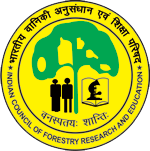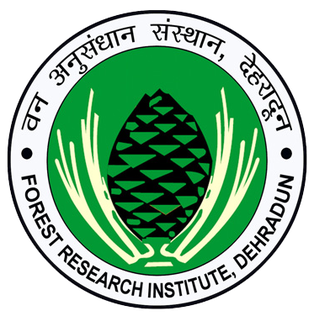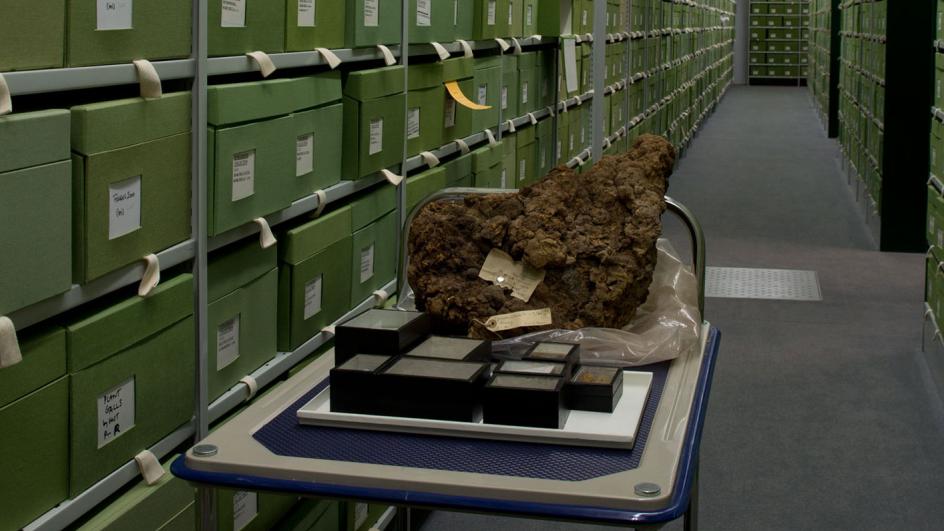The museum also houses the Herbarium which contains nearly 12000 specimens of forest diseases and fungi which are preserved and maintained. The specimens of diseases of forest plants and fungi have been maintained after pressing, drying and mounting on herbarium sheets with details of the collection written on the sheets such as name of the disease, its causal organism, host name, locality of collection, date of collection and name of the collector. Each sheet has been secured in a brown paper envelope which also contains details about the specimen. The specimens are regularly maintained (twice a year) after spraying with para-dichloro benzene and putting naphthalene balls inside the envelope to keep away the insects.
The oldest specimen dates back to 1753 which is of a wood decaying fungus Hydnum auriscalpium (now Auriscalpium vulgare) which grows on fallen cones of conifers. The material has been received from Austro-Hungarica herbarium. The oldest Indian collection dates back to 1878 which is of Lycoperdon delicatum a gasteromycete fungus which was collected by J.S. Gamble from Mahasu, Hanol
There is a huge data already accumulated over the years for the disease specimens and fungi, which have been maintained in the Forest Pathology Museum as per standard norms. The retrieval, search and upgrading of data is done manually, which is time consuming and cumbersome process and involves danger of loss or damage of useful data and material. Besides there are records for one fungus on several hosts or vice versa. Therefore, the digitization of all the records was taken up and soon will be available for access through web. User- friendly computerized systematic approach is being adopted for efficiency, reliability, consistency and security. A relational database management system Forest Pathology Herbarium Database has been developed along with photographic copy of the herbarium sheet, which will keep the records of the Forest Pathology Museum and herbarium and make it easy to access any record in less time. All the herbarium packets and sheets contain a unique barcode. The database contains taxonomical details and searches and data retrieval by genus, species and barcode. The main advantages of this system are.
- Safety for material
- Greater processing speed
- Better accuracy and improved consistency
- Faster information retrieval
- Modifiable
- Better security
- Reports generation
- Web access.
The collection of diseases and fungi of forest plants is unique in the country in that most of the tree species are covered. Students of forestry from all over India and also adjoining Asian countries visit the Museum and Herbarium to know about the diseases and fungi. Many researchers and scholars consult the specimens for verification of their records. Due to its repository of forest diseases and fungi, the Indian Agricultural Research Institute, New Delhi refers to Forest Pathology Division for authentic identification of forest diseases and fungi. The directorate of Plant Protection, Quarantine and Storage, ministry of Agriculture, Govt. of India has accorded the status of Designated Inspecting Authority to the Division for issuing Phytosanitary Certificate for the export of plant material of forestry origin and also for checking for post-quarantine inspection after import. The tourists visiting the Institute go back with knowledge about many facets of fungi and some curious ones even ask for the solution of the problems of the trees growing in their area. The Museum and herbarium are, therefore, serving for creating awareness about the protection of trees among common people and also imparting and sharing knowledge.
Apart from our facility, there are only two Herbaria in the world which exclusively deal with the forest fungi and disease specimens. One is Forest Pathology Herbarium at the Canadian Forest Service’s Pacific Forestry Centre known as DAVFP (Department of Agriculture, Victoria, Forest Pathology), which is an internationally recognized collection of over 35,300 preserved and catalogued forest fungi and disease specimens, representing over 3,000 different fungal species. Other is Mycology Research Herbarium (OSUF) for 28,000 fungal specimens held by the US Forest Service Forest Mycology and Mycorrhiza Research Team, in Corvallis, Oregon, USA. Therefore, the importance of the Museum and Herbarium of forest Pathology Division, FRI, Dehradun is much more than we realize as it is the only third such repository in the world. The repository will be a treasure and knowledge pool for future generations and this national asset needs to be preserved and maintained.



